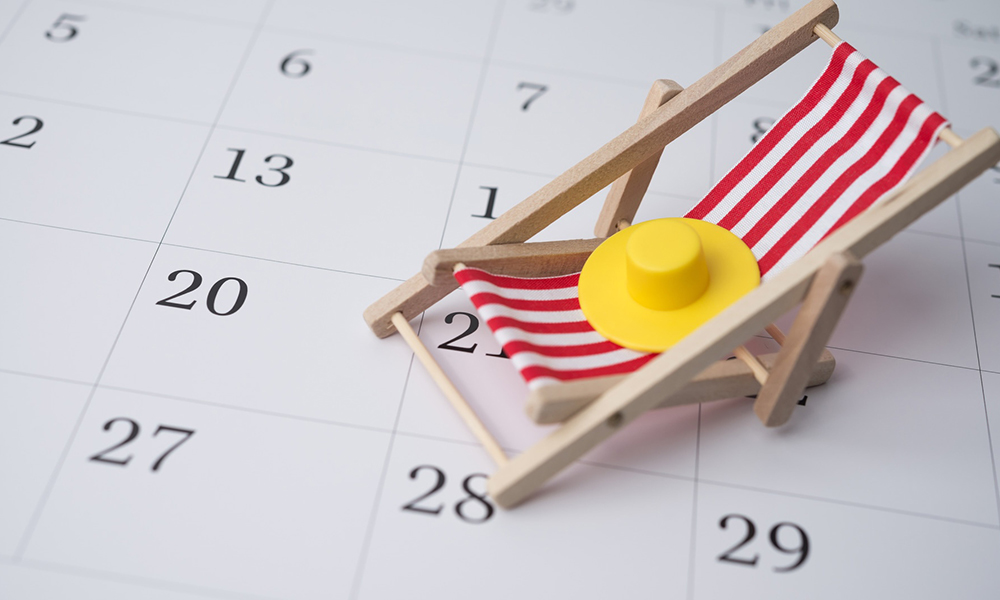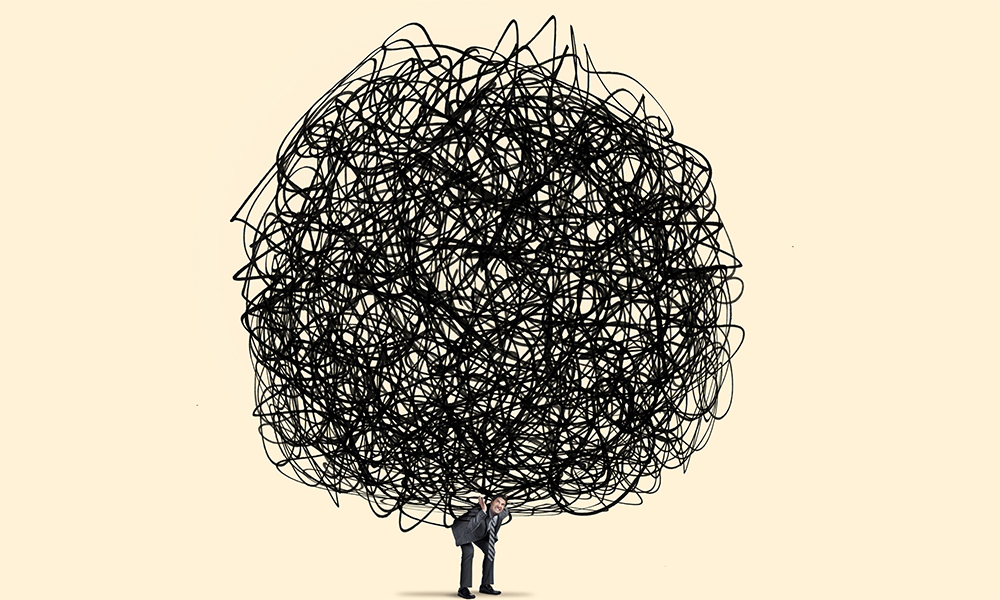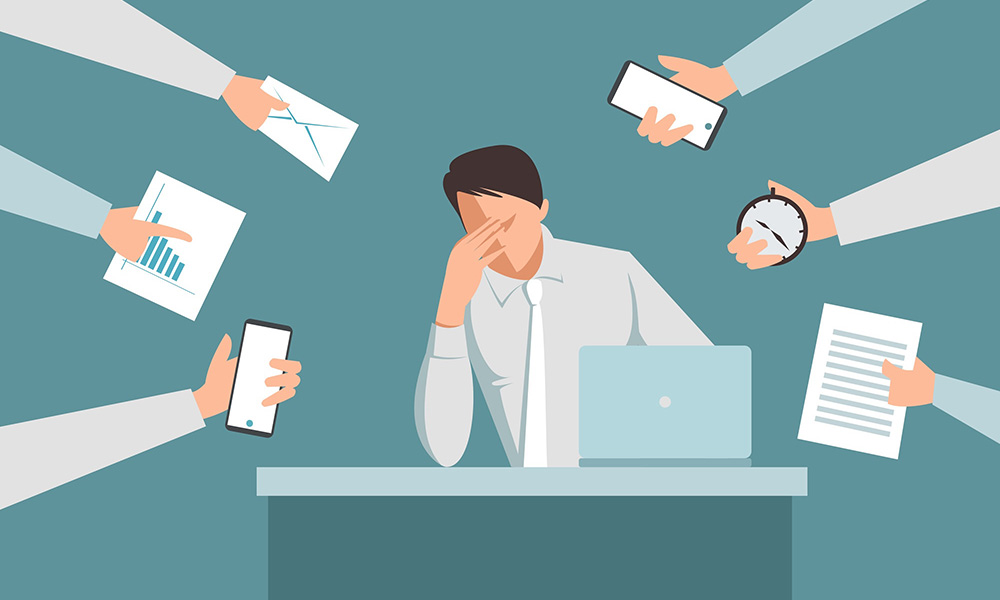Whether you’re working remotely or in the office, interruptions are a fact of professional life. Texts, emails and calls come at us fast, their constant pings, buzzes and rings fragmenting our concentration during working hours. When we return to the office after long periods of WFH, we also have to readjust to another form of interruption – co-workers stopping by the desk for a chat!
According to one study, today’s average employee is interrupted between 50 to 60 times per day. Up to 80 percent of these interruptions are categorised as unimportant.
Some jobs are more prone to interruption than others. Research suggests that IT and healthcare workers are interrupted once every 6-12 minutes!
While the occasional distraction might serve as a welcome break, a continuous stream of interruptions can hinder productivity and prevent us from doing our best work. Unwanted interruptions can also make you feel like you have no control over your workday and create anxiety around not being able to meet other people’s expectations.
So, this week, my message is on how to handle interruptions at work. How do such distractions scatter our focus? What steps can we take to protect our attention and productivity?
Technically, the human brain cannot do two high-level tasks (tasks that require thinking) at the same time. When we say we’re “multitasking”, what we’re actually doing is rapidly switching back and forth between two tasks –which takes up a huge amount of brainpower and energy. This division of focus means that neither task gets done properly.
An article published in the Harvard Business Review explains how our brains respond when interrupted in the middle of a task:
More often than not, part of our attention stays focused on the interrupted task and does not fully switch to the interrupting demand – a term coined attention residue…. While we may think our attention has moved to the next thing, it hasn’t, at least not fully. Consequently, we perform interrupting tasks with only part of our cognitive resources and risk performing them poorly.
Here’s an example. You’re working on a report when an email pops up and you think, “Let me just respond to this quickly.” However, due to attention residue, you’re unable to focus fully on the email, which means you may miss important information or send a confusing reply. When you get back to the report, your concentration is still scattered – hence it takes you longer to finish the work, along with a risk of poor output.
With so many things vying for our attention, we’re also spending less time in “flow”. This is a state of mind that occurs when you are deeply immersed in a task. You feel fully involved, energised and become up to five times more productive than usual! Unfortunately, it’s impossible to sustain a state of flow when you’re being interrupted frequently.
The silver lining
Interestingly, recent studies show that interruptions at work have some unexpected upsides. When colleagues pop by to catch up or ask for help, it creates a sense of connectedness and belonging. When work friends chat on a WhatsApp group, the interaction elicits positive feelings. When you take a call from your partner or friend in the middle of a tough workday, it boosts your mood and gives you your second wind.
In general, non-work-related interruptions are more socially beneficial and can strengthen relationships, while work-related interruptions could facilitate collaboration. According to an article on the LSE website:
In this way, what may appear on the face of it as wasting time may be opportunities to connect and enhance employees’ sense of belonging and job satisfaction.
Handle interruptions constructively
The idea isn’t to do away with interruptions altogether. Rather, it is to minimise and cluster them, and to limit the extent to which they break your “flow”. Here are six suggestions to help you better manage distractions during the workday.
1. Say no to unnecessary urgency.
If you see a new email or text while you’re immersed in a task, it’s okay to tell yourself: “I’ll come to this later.” Better yet, turn off push notifications off when you’re sitting down to deep work. (The average executive receives 46 push notifications each day – that’s 46 potential moments of distraction!)
Being constantly connected has brought an arbitrary urgency to all our communication. Remember, 90 percent of the interruptions that come your way do not, in fact, demand an instant response. Take your time to craft thoughtful written replies, and schedule phone calls during free hours so you can give the conversation your undivided attention.
2. Learn to “batch-check”.
Steve Glaveski, the CEO of a corporate innovation accelerator, lays out the cost of constant distractions in his piece for HBR:
“Just quickly checking” anything, even for one-tenth of a second, can add up to a 40% productivity loss over the course of a day, and it can take us 23 minutes to get back into the zone after task switching.
Instead of keeping an eye on your inbox, IM and social media through the day, make it a habit to batch-check all incoming communications. Mark out pre-set times during which you can read and respond to a bunch of messages together. If self-discipline isn’t your strong suit, try tools like Inbox Pause. This plugin allows you to “pause” your inbox after you’ve checked it, then unpause it again when you’re ready.
3. Become an ace communicator.
Often, the interruptions we face during the workday come in the form of questions, clarifications and follow-ups. A great way to weed these out is to become a proactive and crystal-clear communicator.
To prevent endless back-and-forth email chains, cover all key points in your initial message – from action items to deadlines. During meetings, ensure that everyone leaves with clear next steps, responsibilities and timelines. Depending on your role, you could also make it a practice to send Monday morning/Friday evening updates to all relevant team members, hence eliminating the need for individual check-ins.
4. Set healthy boundaries.
In order to manage your own time more effectively, you also need to manage the expectations of your co-workers. Elizabeth Grace Saunders, a time management coach, makes the following suggestions:
You may want to explain whether text or e-mail works better than a call for reaching out to you at certain times of the day. It also can be helpful to note when you are typically free…. For example, people close to me know that after 6 pm is usually the best time for us to connect either in person or over the phone.
5. Get back on track.
Say you’re brainstorming a new concept when an urgent request arrives. Before you switch tasks, take a few seconds to quickly jot down your ideas so you don’t lose your train of thought entirely. If you’re interrupted in the middle of writing, read the last few paragraphs when you get back to work. This will help you re-immerse in the topic and find your rhythm again.
6. Plan for interruptions.
Since certain interruptions are inevitable, it can be helpful to accept them – and plan for them. Building buffer zones into your schedule can help you avoid time pressure and last-minute panic. If you’re going to start work on something important, consider in advance whether you can delegate emergency requests to a co-worker and check their availability.
Tweak the culture
Those in leadership roles can also help to create an environment in which team members are more mindful about interrupting one another. Making a few key changes within your team, department or organisation will help safeguard the time and focus of your team members.
7. Set deep-work hours.
Leaders could block a few hours each day as officially off-limits for emails, phone calls, texts and meetings. This will give all team members an interruption-free zone to do intensive work.
8. Establish DNDs.
Together with your team, decide on a few “Do Not Disturb” signals. For example, wearing headphones or putting up a “Shhh” sign on the desk/door. If you have the luxury of a mostly-empty meeting room in the office, you could designate it as a “Quiet Zone” for those who want to work in silence.
9. Limit approvals.
Streamlining approvals is another way to reduce excessive communication. As Glaveski notes:
Becoming a “minimum viable bureaucracy” – stripping away unnecessary layers of approvals required to get trivial and not-so-consequential things done – means that there will be less paperwork to move around, which means fewer interruptions for people.
Interruptions are a mixed bag. They can hinder attention and reduce productivity – but they can also strengthen social bonds at the workplace. The trick is to become better at minimising unwelcome distractions and carving out interruption-free periods during the workday. Not only will this help you deliver your best work but also leave you feeling less anxious and more fulfilled.








Comments